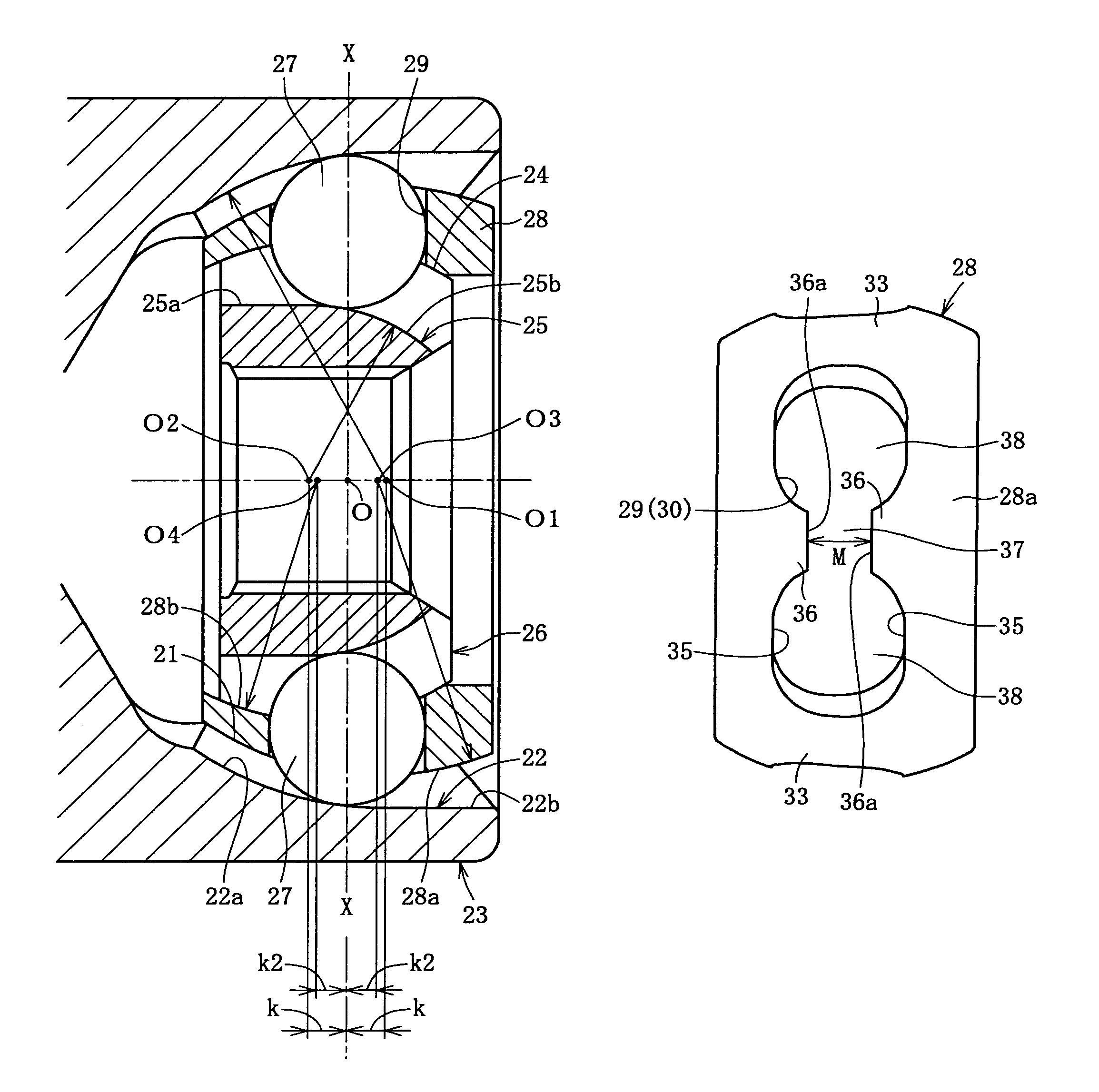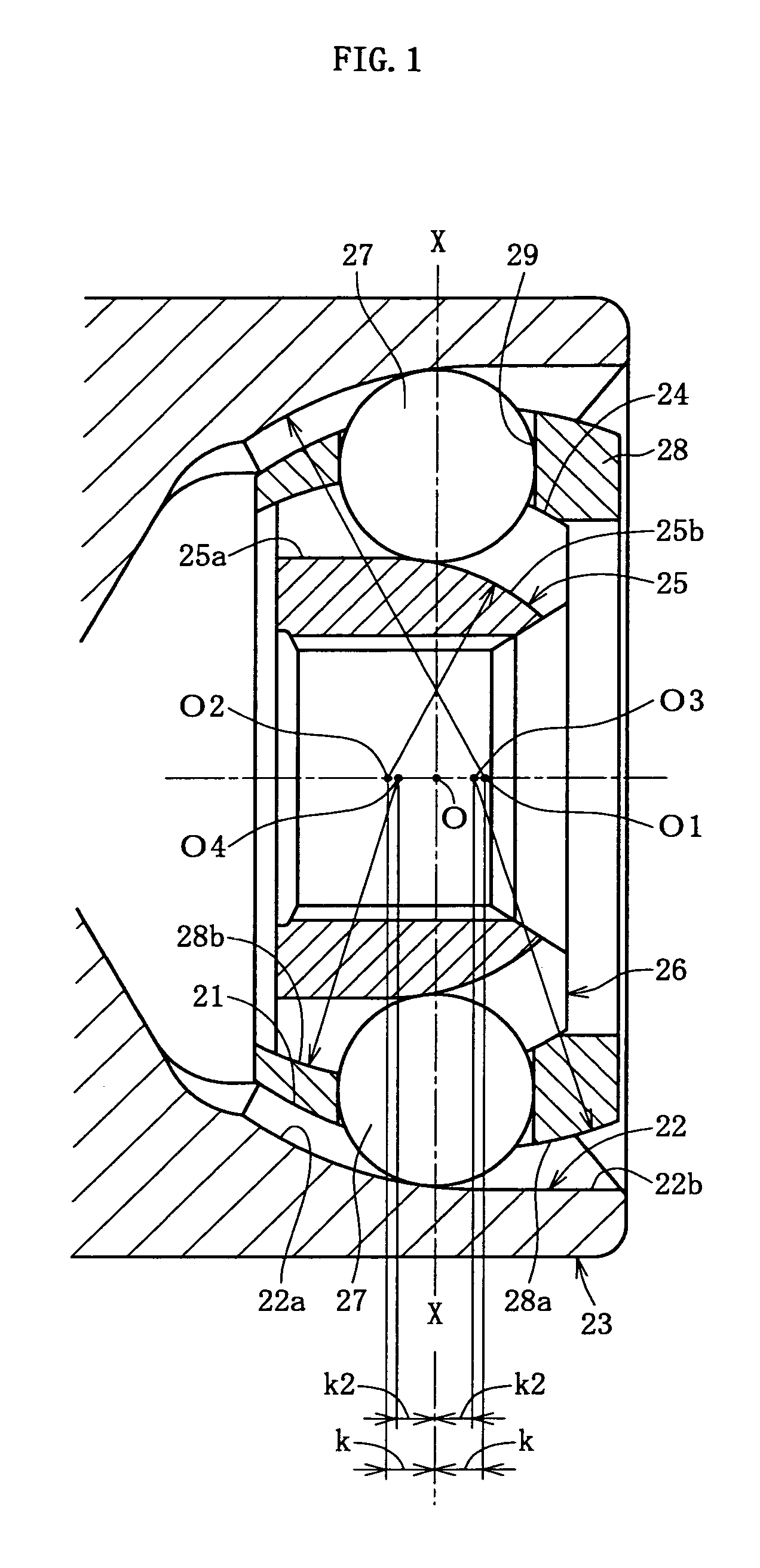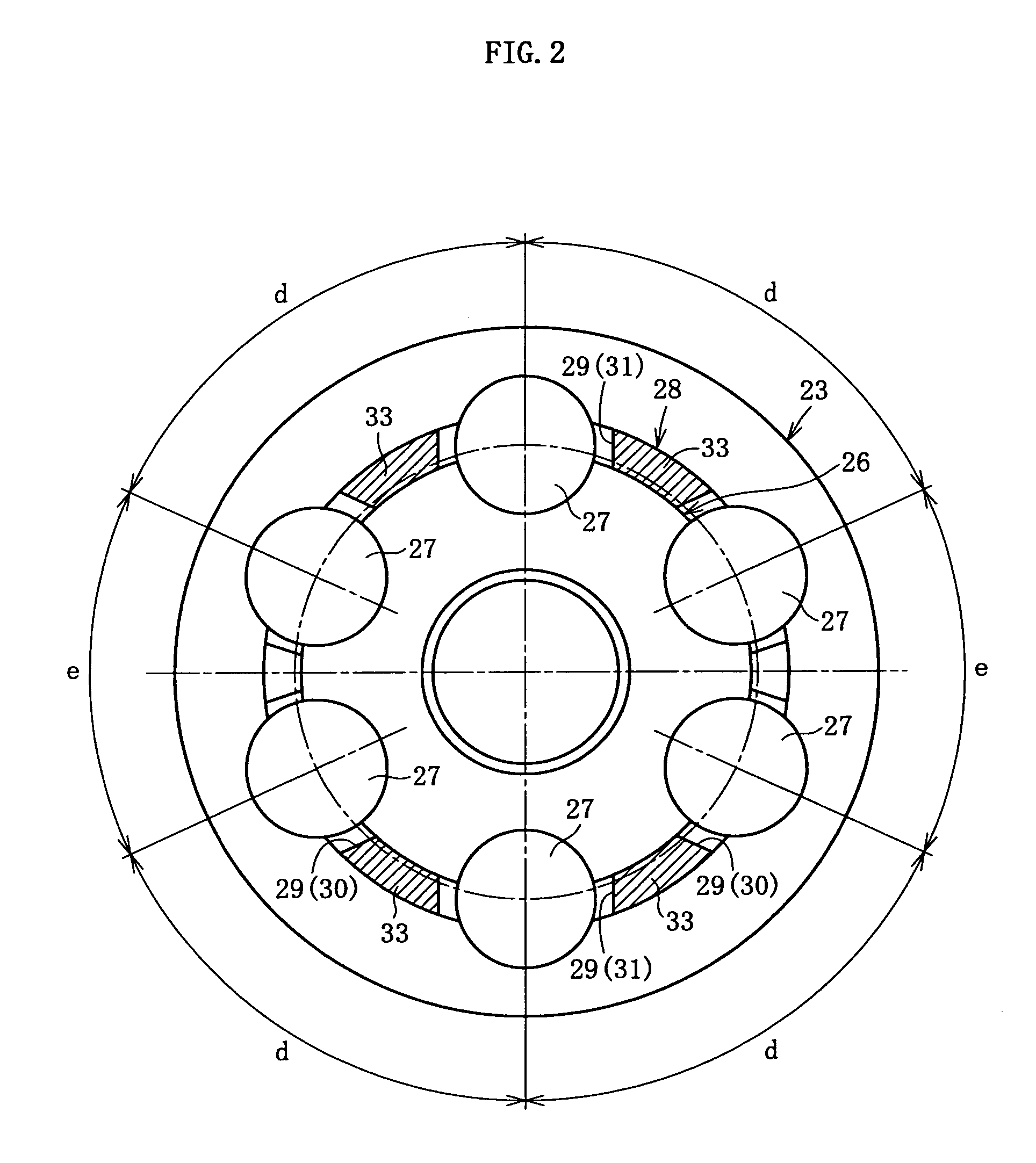Fixed constant-velocity universal joint
a constant-velocity, universal joint technology, applied in the direction of yielding couplings, clutches, rotary machine parts, etc., can solve the problems of narrow window columns, deterioration of rigidity of cages, narrow window columns between the pockets of cages, etc., to prevent damage to the cage in relation to torsional torque at a high angle, reduce the size of the cage, and increase the rigidity of the cage window column
- Summary
- Abstract
- Description
- Claims
- Application Information
AI Technical Summary
Benefits of technology
Problems solved by technology
Method used
Image
Examples
Embodiment Construction
[0085]A basic embodiment of the present invention will be described hereafter with reference to FIG. 1 to FIG. 19. Three modified embodiments will thereafter be described with reference to FIG. 20 to FIG. 28, FIG. 29 to FIG. 30, and FIG. 31 to FIG. 40.
[0086]As shown in FIG. 1, a fixed constant velocity universal joint according to the basic embodiment includes an outer ring 23, an inner ring 26, a plurality of balls 27, and a cage 28. The outer ring 23 serves as an outer member in which a plurality of track grooves 22 are formed on an inner spherical surface 21 along an axial direction, unevenly spaced in a circumferential direction. The inner ring 26 serves as an inner member in which a plurality of track grooves 25 paired with the track grooves 22 on the outer ring 23 are formed on an outer spherical surface 24 along an axial direction, unevenly spaced in a circumferential direction. The balls 27 are interposed between the track grooves 22 of the outer ring 23 and the track groove...
PUM
 Login to View More
Login to View More Abstract
Description
Claims
Application Information
 Login to View More
Login to View More - R&D
- Intellectual Property
- Life Sciences
- Materials
- Tech Scout
- Unparalleled Data Quality
- Higher Quality Content
- 60% Fewer Hallucinations
Browse by: Latest US Patents, China's latest patents, Technical Efficacy Thesaurus, Application Domain, Technology Topic, Popular Technical Reports.
© 2025 PatSnap. All rights reserved.Legal|Privacy policy|Modern Slavery Act Transparency Statement|Sitemap|About US| Contact US: help@patsnap.com



